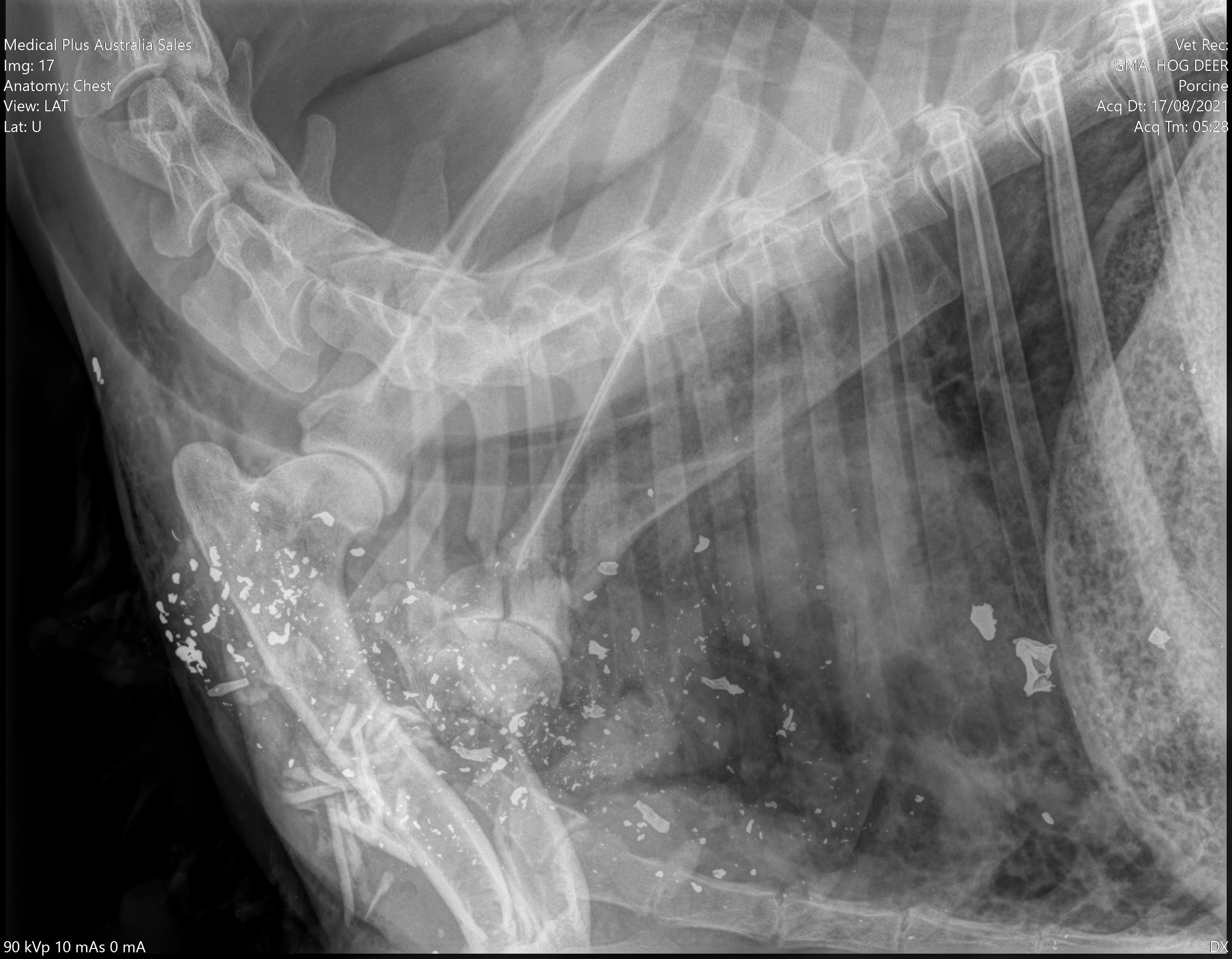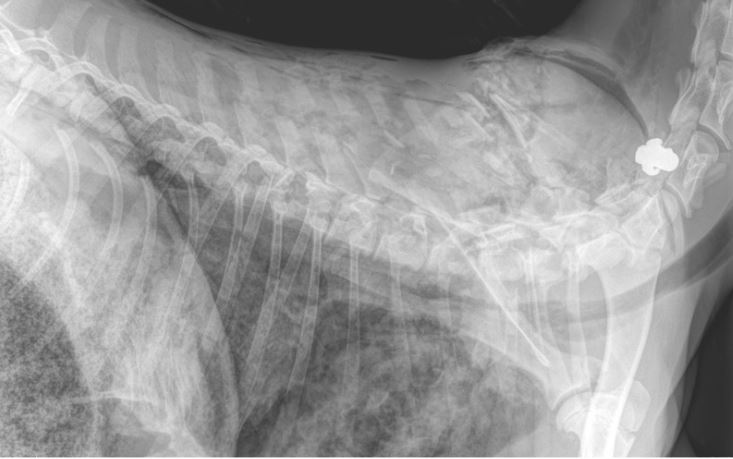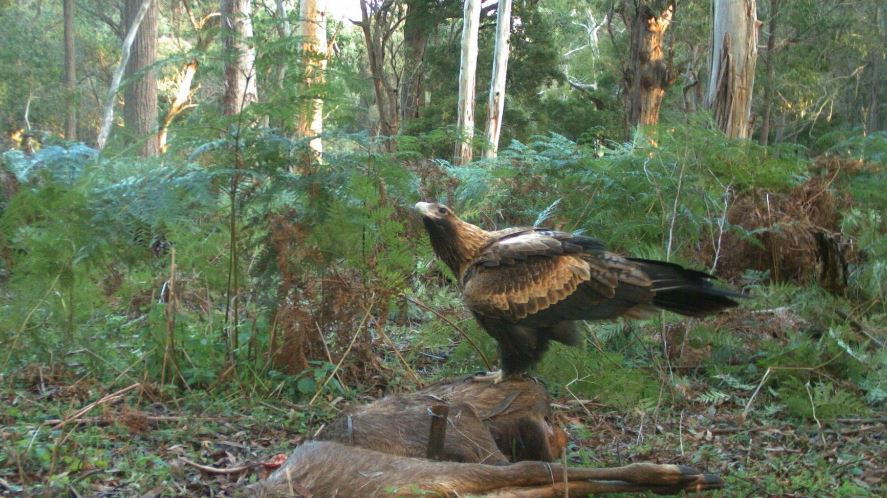Environmental and health risks of lead bullets for deer hunting
Why is the use of lead ammunition an issue?
 Lead bullets for deer hunting have been used for centuries. The popularity of lead bullets is largely due to its availability, low-cost and its ballistic properties as a soft and dense metal. However, lead is a toxic heavy metal with no biological function. It is toxic to all animals, including humans, with no safe level of exposure. This means that the ingestion of even small quantities of lead can have negative health impacts1.
Lead bullets for deer hunting have been used for centuries. The popularity of lead bullets is largely due to its availability, low-cost and its ballistic properties as a soft and dense metal. However, lead is a toxic heavy metal with no biological function. It is toxic to all animals, including humans, with no safe level of exposure. This means that the ingestion of even small quantities of lead can have negative health impacts1.
There has been extensive work done over past decades to minimise lead exposure from a range of everyday sources. This includes bans or restrictions on the production and use of lead-based paints, fuel and water pipes.
Lead shot for waterfowl hunting has been prohibited in many countries around the world for decades. When a game deer is dispatched with a lead-based bullet, fragments remain in the meat. These fragments are often too small to see and can be ingested when eating game meat. For the consumer, these particles accumulate over time and contribute to raising lead levels, increasing the risk of health problems.
 There is growing scientific evidence that highlights how the use of lead bullets is causing unnecessary lead exposure to humans, domestic dogs, wildlife and the environment.
There is growing scientific evidence that highlights how the use of lead bullets is causing unnecessary lead exposure to humans, domestic dogs, wildlife and the environment.
Image above on right - Lead and bone fragments throughout the carcass of a Hog Deer shot with a lead bullet. Fragments can be found up to 45 cm from the wound channel.
Image on left - On left: lead bullet and its fragments after impact. Lead bullets typically lose up to 40 per cent of their mass following impact. On right: A solid copper bullet with a plastic tip. Copper bullets generally lose 0–5% of their mass. Source: huntingwithnonlead.org
When lead enters the human body, it is distributed to organs including the brain, kidneys, liver and bones. The human body stores lead in the teeth and bones, where it accumulates over time. Lead can impact on a range of body systems and functions, including the nervous, immune and reproductive systems2.
Young children are particularly vulnerable to the toxic effects of lead. Young children absorb 4–5 times as much ingested lead as adults from a given source. As a result, they can suffer profound and permanent adverse health impacts on the development of the brain and nervous system1.
Lead can also cause long-term harm in adults, including increased risk of high blood pressure and kidney damage. For pregnant women, exposure to high levels of lead can cause miscarriage, stillbirth, premature birth and low birth weight1,3.
Dogs fed with lead contaminated game meat can experience the same ill health effects as humans. Studies have shown that feeding game meat harvested with lead-based bullets to hunting dogs can cause unsafe blood lead levels, placing them at risk of lead-induced health issues4,5.
Predatory and scavenging wildlife, especially birds, are vulnerable to poisoning from feeding on carcass remains and gutpiles of animals harvested with lead bullets. For predatory and scavenging wildlife, lead can cause damage to the nervous system and, in severe cases, can lead to paralysis or death. At lower levels, lead can cause sublethal effects, such as damage to tissues, organs, the reproductive and immune systems, and neurological impairment6. Overseas, lead poisoning of Bald Eagles, Golden Eagles and California Condors has been well-documented. Although not as well studied, mammals, such as Brown Bears and American Black Bears, have also been shown to be exposed to lead from ammunition7,8.
In Australia, a recent study found that greater than 50 per cent of Wedge-tailed Eagles examined from east Gippsland had elevated bone lead levels (>10 mg/kg) and 13 per cent had severe lead exposure (>20 mg/kg)9. Similar results have been reported from Tasmania10. Scavenging from animal carcasses shot with lead-based ammunition is almost certainly the main contributing factor to this exposure10. A study on wild and captive Tasmanian Devils found captive animals had a significantly higher blood lead levels after they were fed the meat of wild animals shot with lead-based ammunition11. Other mammals, such as quoll species, could be at risk after feeding on contaminated carcasses, although this has not been investigated.
Wedge-tailed eagle eating shot deer carcass (Jordan Hampton/ University of Melbourne).
The Game Management Authority estimates that more than two tonnes of lead is deposited in the Victorian environment every year from deer hunting with lead-based bullets.
Under most conditions, lead deposited in soil or water is relatively stable12. Over time, it will degrade through erosion and chemical reaction, especially in areas with low pH2.
Where lead is incorporated into the soil, it can be taken up by plants and invertebrates2. Indirect exposure to birds and mammals can also occur from ingestion of soil, water or invertebrates contaminated with lead and preyed on.
There is an easy technical solution to prevent the risks of lead exposure. By simply switching to the use of lead-free ammunition (e.g. copper, copper-alloy, brass, tin) when deer hunting, hunters can reduce the risks of lead exposure in humans, dogs and wildlife.
Overseas, a range of lead-free bullets/cartridges in many calibres are commercially available for deer hunting. While availability is currently limited in Australia, as the demand increases, the ammunition industry will import more lead-free bullets and local manufacturing may also emerge.
Cost is likely to be higher while availability is limited, but given the total spend on deer hunting, this is likely to be minor and will reduce as more supply becomes available13.
Solid (‘monolithic’) copper bullets have been shown to be just as effective as lead-based bullets for deer hunting, without the negative environmental impacts of lead14,15. Copper bullets have been successfully used for many years in Europe, North America and Africa.
Using the right bullets for the species and distances you are hunting, together with good shot placement, are the most important principles when switching to lead-free ammunition. This applies to all hunting.
There are several other benefits to copper bullets, such as deep penetration (including through bone), almost 100 per cent bullet weight retention and high ballistic coefficients.

Many Australian hunters have already made the switch to lead-free ammunition.
So, why not give it a go and feel confident that you are minimising your hunting footprint, while also protecting your health and the health of your friends and family. By switching to lead-free bullets, you will also be supporting a healthier future for our environment.
The references cited on this web page provide valuable information on the issues with lead ammunition for hunting.
For any questions, please feel free to get in contact with your local GMA Game Manager via 136 186.
They will be more than happy to discuss how you can assist in creating a sustainable hunting future for everyone.
- WHO (2022). Lead poisoning and health. Retrieved November 3, 2022, from https://www.who.int/news-room/fact-sheets/detail/lead-poisoning-and-health
- Pain, D.J., Mateo, R. and Green, R.E. (2019). Effects of lead ammunition on birds and other wildlife: A review and update. Ambio 48: 935-953.
- Arnemo, J.M., Fuchs, B., Sonne, C. and Stokke, S. (2022). Hunting with Lead Ammunition: a One Health Perspective. In Tryland, Morten (Eds.), Arctic One Health: Challenges for Northern Animals and People. Springer Nature. ISSN 978-3-030-87853-5. p. 439–468. https://doi: 10.1007/978-3-030-87853-5_21
- Høgåsen, H.R., Ørnsrud, R., Knutsen, H.K. and Bernhoft, A. (2016). Lead intoxication in dogs: risk assessment of feeding dogs trimmings of lead-shot game. BMC Veterinary Research 12(1). https://doi.org/10.1186/s12917-016-0771-z
- Fernández, V., Caselli, A., Tammone, A., Condorí, W.E., Vanstreels, R.E.T., Delaloye, A., Sosa, C. and Uhart, M.M. (2021). Lead exposure in dogs fed game meat and offal from culled invasive species in El Palmar National Park, Argentina. Environmental Science and Pollution Research, 28(33): 45486-45495.
- Rattner, B.A., Franson, J.C., Sheffield, S.R., Goddard, C.I., Leonard, N.J., Stand, D., and White, P.J. (2008). Sources and implications of lead-based ammunition and fishing tackle on natural resources. Wildlife Society Technical Review. The Wildlife Society, Bethesda, MD, USA.
- Fuchs, B., Thiel, A., Zedrosser, A., Brown, L., Hydeskov, H.B., Rodushkin, I., Evans, A.L., Boesen, A.H., Græsli, A.R., Kindberg, J. and Arnemo, J.M. (2021). High concentrations of lead (Pb) in blood and milk of free-ranging brown bears (Ursus arctos) in Scandinavia. Environmental Pollution 287: 117595.
- Brown, L., Rosabal, M., Dussault, C., Arnemo, J.M., Fuchs, B., Zedrosser, A. and Pelletier, F. (2022). Lead exposure in American black bear increases with age and big game harvest density. Environmental Pollution 315: 120427.
- Hampton, J.O., Specht, A., Pay, J., Pokras, M. and Bengsen, A. (2021). Portable X-ray fluorescence for bone lead measurements of Australian eagles. Science of The Total Environment 789(1), https://doi.org/10.1016/j.scitotenv.2021.147998
- Pay, J.M., Katzner, T.E., Hawkins, C.E., Koch, A.J., Wiersma, J.M., Brown, W.E., Mooney, N.J. and Cameron, E.Z. (2021). High frequency of lead exposure in the population of an endangered Australian top predator, the Tasmanian wedge‐tailed eagle (Aquila audax fleayi). Environmental Toxicology and Chemistry 40(1): 219-230.
- Hivert, L.G., Clarke, J.R., Peck, S.J., Lawrence, C., Brown, W.E., Huxtable, S.J., Schaap, D., Pemberton, D. and Grueber, C.E. (2018). High blood lead concentrations in captive Tasmanian devils (Sarcophilus harrisii): a threat to the conservation of the species? Australian Veterinary Journal 96(11): 442-449.
- Kanstrup, N., Fox, A.D. and Balsby, T.J.S. (2020). Toxic lead gunshot persists accessible to waterbirds after a 33-year ban on their use. Science of The Total Environment 714, 136876.
- Kanstrup, N. and Thomas, V.G. (2020). Transitioning to lead-free ammunition use in hunting: socio-economic and regulatory considerations for the European Union and other jurisdictions. Environmental Sciences Europe 32(1): 1-11.
- Stokke, S., Arnemo, J.M. and Brainerd, S. (2019). Unleaded hunting: Are copper bullets and lead-based bullets equally effective for killing big game? Ambio 48(9): 1044-1055.
- Hampton, J.O., Bengsen, A.J., Flesch, J.S., Toop, S.D., Davies, C., Forsyth, D.M., Kanstrup, N., Stokke, S. and Arnemo, J.M. (2022). A comparison of lead-based and lead-free bullets for shooting sambar deer (Cervus unicolor) in Australia. Wildlife Research, https://doi.org/10.1071/WR22099
See printable copy of this webpage
Page last updated: 09 Mar 2023
